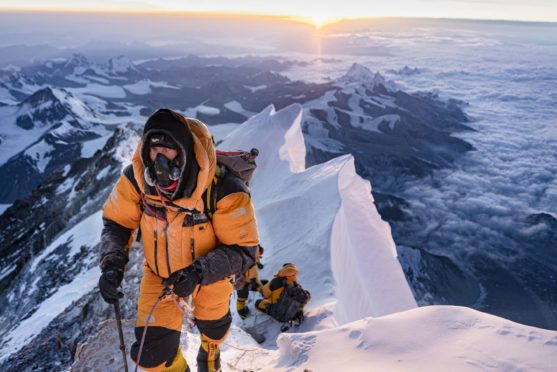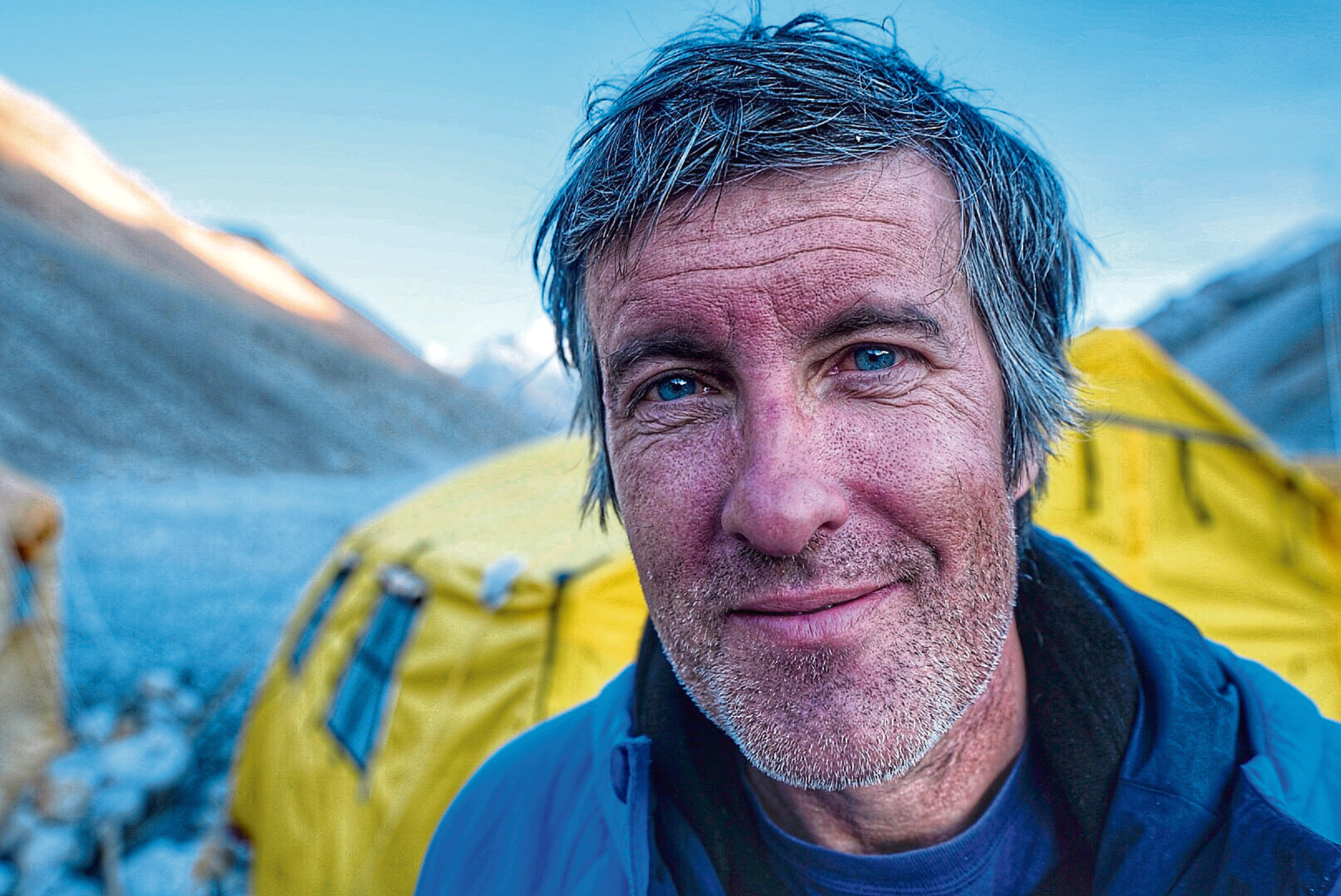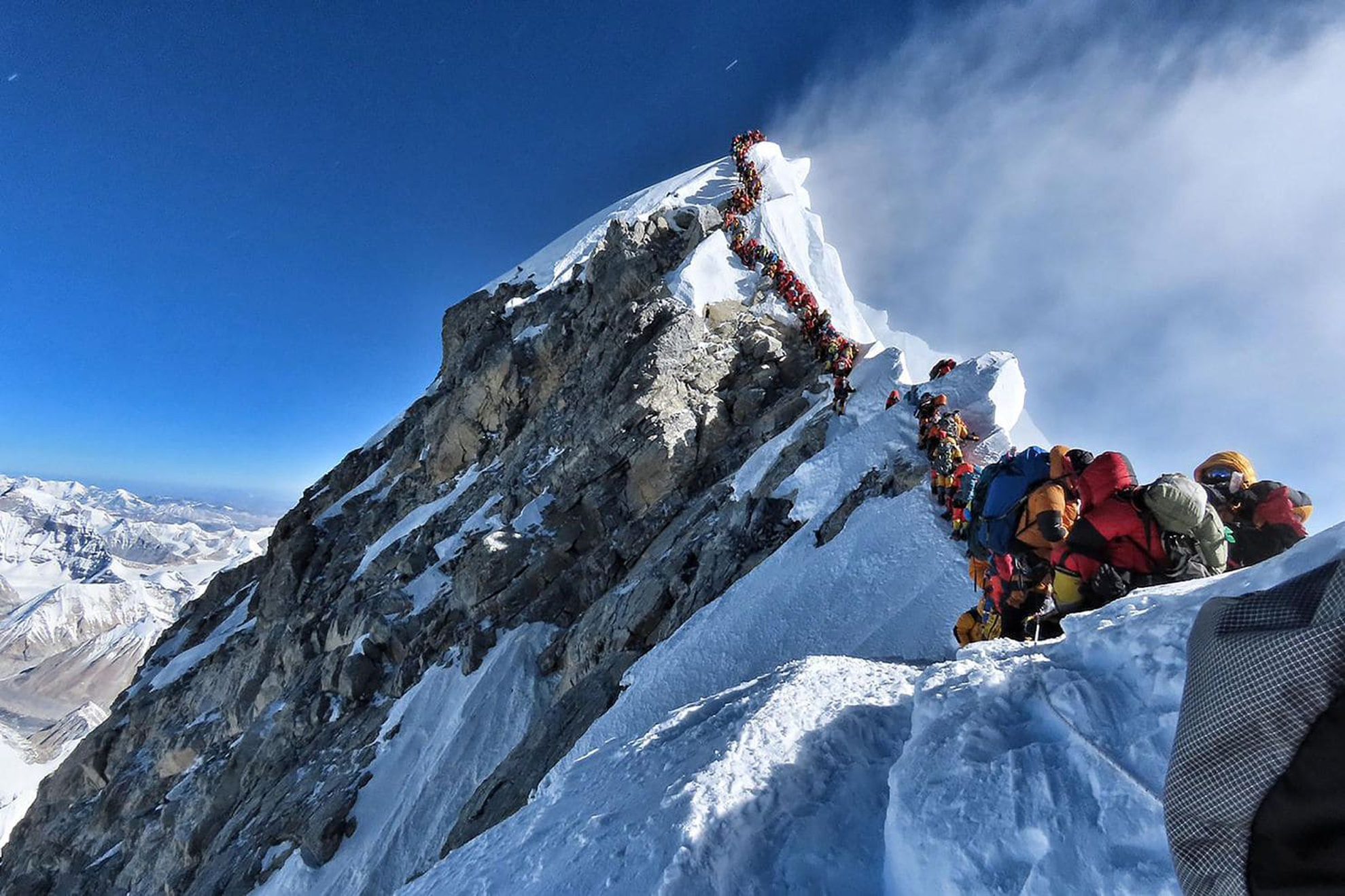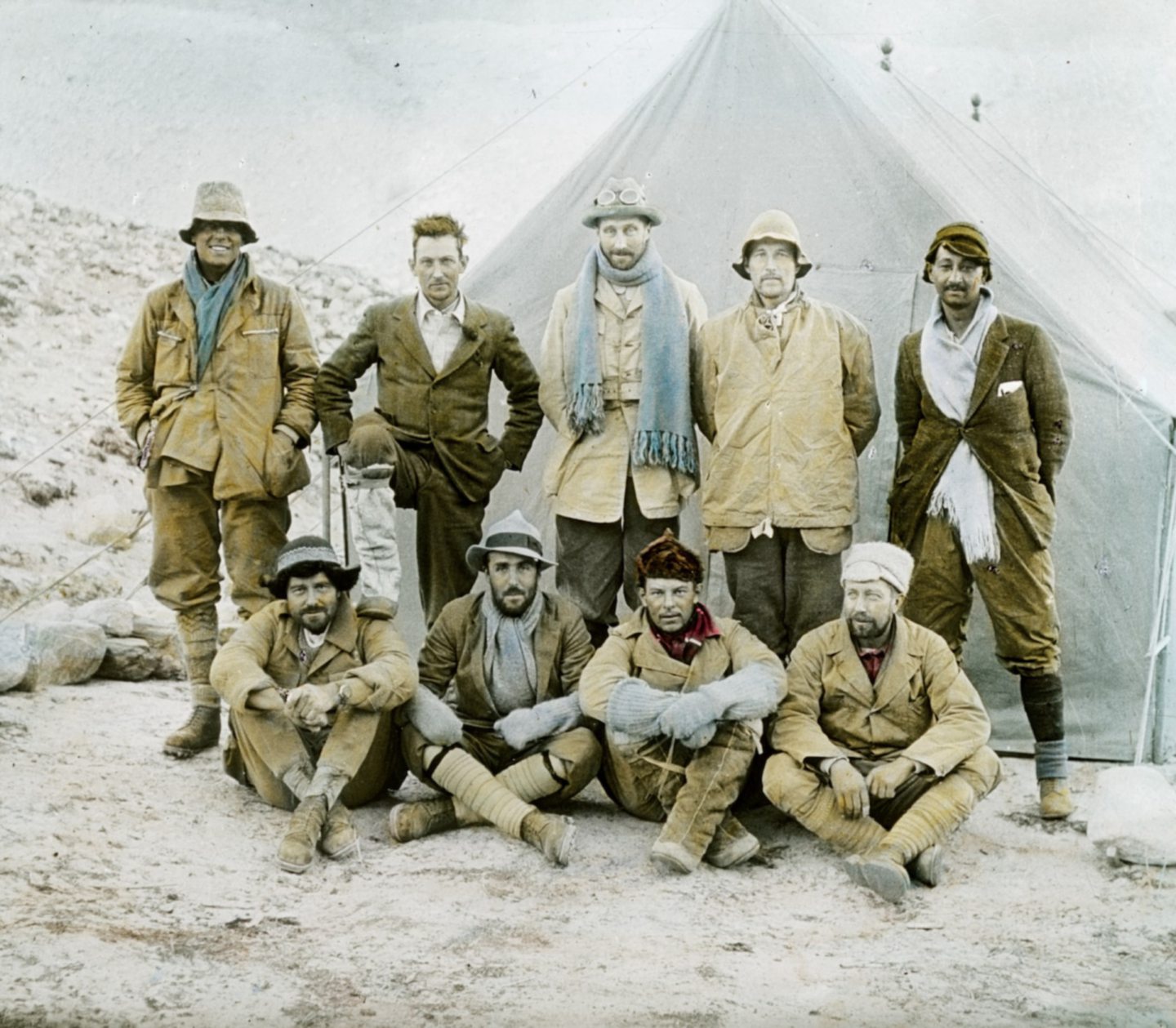
From far below, they were two tiny dots close to the summit of the world’s highest mountain. It was just before 1pm on June 8, 1924 and the dots seen by geologist Noel Odell were George Mallory and Andrew Irvine, soon to be lost in a ferocious snow storm.
But were they going up or down? Had they reached the summit before their death? Were they the first men to see the top of the world? Did they make it?
Those questions have obsessed mountaineers since the pair’s epic and fatal climb in 1924 because if the young British climbers – in hobnail boots and Gabardine coats – had reached Everest’s 29,035ft summit – then dubbed The Third Pole – the history books would need to be rewritten.
They would have beaten New Zealander Sir Edmund Hillary and Sherpa mountaineer Tenzing Norgay, who took the record in 1953, by some 30 years. They would also have been the first to successfully do it on the deadly North Face, almost 40 years before a Chinese team made the climb in 1960.
All that is known is that Mallory, 37, and Irvine, 22 and known as Sandy – who is said to have carried a Vest Pocket Kodak (VPK) camera that might hold proof of the men on the summit – died on the mountain.
The body of Mallory – who once famously replied when asked why he wanted to climb Everest “because it is there” – was found in 1999. Many have tried to find Irvine and his Kodak but failed. The only clue came two years later in 2001 when one of the 1960 Chinese climbers claimed he had seen a body on the North Face that was not Mallory so had to be Irvine.
Now Mark Synnott, the National Geographic explorer and climber, who, armed with fresh intelligence in 2019, searched the area known as the Holzel Spot and found nothing, reveals startling new information in his latest book that raises a new question: did the Chinese remove Irvine’s body to protect its own 1960 record?
Synnott was part of an 18-strong expedition led by the New Zealander Jamie McGuinness. He revealed: “One of his local contacts told Jamie that he had heard directly from a China Tibet Mountaineering (CTMA) official that the Chinese had beat us to the Holzel Spot and carried Irvine’s body off the mountain and back to Lhasa, where it is kept under lock and key with other Mallory artefacts, including the VPK.”
He said the information echoed rumours they had heard earlier in the expedition but were unable to confirm, but, he claimed, in 2012, a Chinese liaison officer had told McGuinness the body was taken before 2008. Synnott, who has also had sight of a “top secret” Chinese document about the country’s record-breaking 1960 ascent, writes in his book, The Third Pole: “After hearing Jamie’s more recent revelations, I started to wonder if there was more in it.”
The 51-year-old dad-of-four, a highly respected professional climber, revealed he shared the details with Jochen Hemmleb, a world expert on Everest, who was also part of the group, that was led by Eric Simonson, that found Mallory’s body in 1999. He said that Hemmleb “had heard the same thing from his Chinese contacts”.
Hemmlebb, who has been working on the mystery himself for 34 years with four expeditions on Everest, said that because of its sheltered position, it was more likely the body was moved, rather than being swept away by wind or avalanche. He said he did not want to “finger point”. But, he confirmed: “I have picked up similar rumours from different persons than Mark did. I second Mark on this. I am on the same page as him.”
Synnott accepts that the information is only hearsay but in the book, he stresses: “We now have multiple sources all essentially saying the same thing: the Chinese found Irvine, removed the body, and are jealously guarding this information from the rest of the world – all to protect the claim that the 1960 Chinese team was the first to reach the summit of the Third Pole from the north.”
He has also had sight of a Chinese document on the 1960 mission prepared for the country’s leaders, revealing the importance of the record to China.
Simonson, who attended Madras College secondary school in St Andrews while living in Scotland and now runs International Mountain Guides in the US, added: “When Jochen and I interviewed the old Chinese climbers from the 1960 Chinese expedition, one of them, Xu Jing, had clearly seen another dead body at 8,300m. At that time, Mallory and Irvine were the only two dead people up there.
So, no question that Irvine was there, and was found by the Chinese in 1960. Whether the Chinese subsequently disposed of him, or whether nobody has been able to find him again, who knows? That is the mystery.”
When last seen by their teammate Noel Odell, Mallory and Irvine were making confident progress, a vertical 800ft below the summit, where Mallory had pledged to place a picture of his wife. Moments later, they were enveloped in swirling cloud. When it cleared they had vanished.
When Mallory’s body was found his pockets were searched but the photo was not among his belongings. Did he leave it at the summit? Only Irvine’s camera could hold the answer.
Synnott, who after a lifetime of professional climbing with a string of major feats under his belt including repeatedly scaling Yosemite’s towering El Capitan, was jaded by the commercially guided tourism on Everest and had determinedly ignored it.
It was only after a presentation by his friend, the award-winning cameraman Thom Pollard that he admitted to catching the “Irvine fever”. He spent months researching and training for the gargantuan task to find him. Aided by an aerial photo from 1986 explorer Tom Holzel that pinpointed the spot where Xu Jing said he had seen the body in a crevice-like feature at about 27,500ft, he also had the advantage of using drones.
Synnott, whose expedition was featured in the National Geographic documentary Lost On Everest, reached the summit, sending his wife a selfie, before tackling the most dangerous part of the mission, the descent. Two hours later his GPS told them they were within 200ft of Holzel’s Spot. It was time for Synnott to venture off the relative safety of the fixed ropes and search.
Reliving that death-defying moment, he said: “The moment I left the rope, Lhakpa Sherpa yelled, ‘No, no, no! Very dangerous, very dangerous!’ As a veteran climber and guide who had summited Everest multiple times, he knew that one bad slip on the loose scree and I could plummet 7,000 feet to the Rongbuk Glacier. Part of me agreed with him and wanted to call it off.” But Synnott ignored all warnings and promises made to family back home. He admitted: “The mystery of Irvine’s disappearance was too strong.”
Alone and scared, he edged his way towards the crevice. Though searchers in 1933 and 2004 had passed through, none, according to Holzel had been to the spot. Between his legs, he could see the void beneath and the glacier a mile below. He recalled: “I was focused on survival and nothing else. They were perhaps the most power-charged moments of my life.”
But when he reached the spot there was no body. The crevice he had seen on the drone photos had been an optical illusion. The crack was only nine inches wide. He said: “I don’t think the body was in that area. If it was, we would have seen it on the photos. I spent hours looking with a magnifying glass. There’s nothing there.”
Mallory’s body is also reported to have gone missing from his mountain grave despite repeated searches of the site. Synnott had planned to go to China to investigate, but Covid-19 hit, banning travel there. He reveals that task will no longer be his. “Now my book is finished, that interview is up to someone else. I very carefully said what I wanted to say. I did it thoughtfully in a conscientious way.
“I found a top secret Chinese document about the 1960 expedition. I had it translated. That, as far as I know, has never been seen by anyone in the Western world. I state all the facts in the book and I let people decide for themselves what they think. I feel my job is done.”
So does he think they made it to the summit in 1924? “I don’t know, but I’d like to give them the benefit of the doubt. Just the fact that they got where they did is enough. I am in eternal admiration.”
The Third Pole: My Everest Climb to Find the Truth About Mallory and Irvine is out now published by Headline.
THEN AND NOW
THE WARMTH
In 1924 climbers layered natural materials such as silk and wool for warmth. Modern breathable synthetic materials dramatically improved wind
and waterproofing.
THE OXYGEN
Mallory’s 20lb, two-tank system held 1,070 litres of oxygen – good for about nine hours. One modern tank weighs the same but holds about twice the oxygen.
THE HARNESS
Early climbers tied rope around their bodies for safety. Before Mallory’s rope snapped, the tug caused rib damage, unheard of with modern harnesses.
THE ROPE
Twisted flax ropes had little stretch and could easily snap. Today’s ropes are more than twice as strong, lighter, and more durable, and stretch to absorb any falls.
THE AXE
Once used to cut steps into the ice, axes today are carried mainly to prevent and arrest falls. Fixed ropes and crampons eliminate the need to cut steps.
THE BOOT
A thick felt midsole insulated Mallory from cold boot nails. Modern boots are waterproof and better insulated, and feature built-in gaiters.

Enjoy the convenience of having The Sunday Post delivered as a digital ePaper straight to your smartphone, tablet or computer.
Subscribe for only £5.49 a month and enjoy all the benefits of the printed paper as a digital replica.
Subscribe © Thom Pollard.
© Thom Pollard.  © Getty
© Getty  © John Noel / Royal Geographical Society
© John Noel / Royal Geographical Society